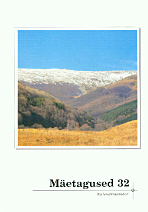Rituaalse aasta kajastumine vanasõnades: üldisi tähelepanekuid
The Ritual Year as Reflected in Proverbs: General Notes
Author(s): Irina Aleksandrovna SedakovaSubject(s): Customs / Folklore
Published by: Eesti Kirjandusmuuseum
Keywords: calendar prediction; folk calendar; ritual year; proverbs; Orthodox calendar
Summary/Abstract: The article discusses expressions of folk wisdom which allude to the concept of time, the system structured according to the calendar and the rituals, performed on certain dates. The yearly cycle has developed a system of folk aphorisms concerning almost every day in the calendar and covering all the activities of the man and of the nature in great detail. Terms like aphorisms, proverbs, sayings, etc. are used to denote various folklore (speech) genres depicting the ritual year in a rather provisional manner. Apart from the genres mentioned, idioms, comparisons and some spells and curses are also examined.These speech folklore genres are a vast field of research. The question of whether we can speak of ethnic paremia, as asked by the prominent folklorist Dan Ben-Amos (1969) and supported by other scholars, is still very topical, especially in view of the type of proverbial sayings under discussion. The main issues that are examined in the paper are: what is universal and what is unique. The article mainly focuses on sayings which concern the ritual year and outlines the specific features of the folk perception of time as reflected in the calendar. Folk aphorisms reflect the ritual year through names of holidays, terms of ritual objects, food and participants, and through allusions to certain celebration throughout the year. The paremia can express direct meaning, appropriate for only one situation, or they can be of metaphorical nature, describing a set of situation. Each European culture has developed its own ways of seeing the ritual year through metaphorical proverbs, idioms and sayings. Although the set of holidays chosen by each folk paremiological tradition may be different, unique even, the major principles of mentioning a rite in a proverb have universal value and correspond to the structural and semiotic rules of the folklore genre.
Journal: Mäetagused. Hüperajakiri
- Issue Year: 2006
- Issue No: 32
- Page Range: 117-142
- Page Count: 28
- Language: Estonian

